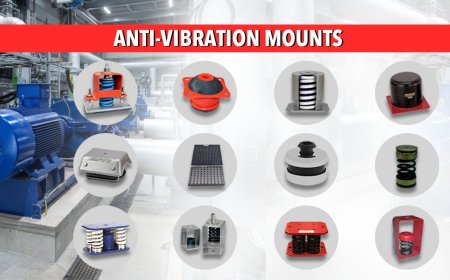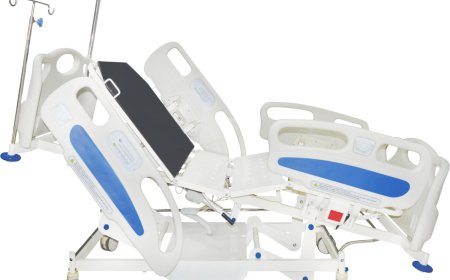When Should You Replace Your Dust Collector Filter? Signs and Tips
Dust collector filters trap harmful dust, protect equipment, and maintain air quality. Replace regularly to avoid energy loss, leaks, and downtime.

Ever walked into a workshop or factory and observed that thick layer of dirt on the whole thing? Thats precisely what a dirt collector filter is meant to prevent. These filters play a vital position in keeping air smooth, shielding machinery, and ensuring a secure surroundings. But like any hardworking component, they dont last forever. At some factor, that clear out goes to cry out for retirementand ignoring it is able to imply a problem. So, permits speak approximately the telltale signs and symptoms and handy recommendations to recognise exactly whilst you should update your dust collector filter out.
Why Dust Collector Filters Matter
Role in Industrial Settings
From woodworking shops to metal foundries, dust collector filters are the unsung heroes. They entice airborne particles before they escape into the workspace or wreak havoc on machines. Without them, youd have greater dust than air in a few facilities.
Health and Safety Concerns
Beyond cleanliness, airborne debris may be dangerous to inhale. Long-term publicity can cause respiratory problems. So, a smooth and functioning filter out isnt pretty much performanceits also approximately fitness.
What Is a Dust Collector Filter Cartridge?
Youll regularly pay attention approximately dirt collector filter cartridges, and its essential to recognize they arent similar to fashionable flat filters. These cartridges are cylindrical or oval and designed for excessive-efficiency particle capture in compact structures. They're amazing for tight spaces and allow for extra filter out floor regions in a smaller footprint.
Difference Between Filter and Cartridge
While all cartridges are filters, no longer all filters are cartridges. The cartridge version is truly an extra green and compact layout, used broadly in contemporary dust series structures.
Cartridge Function in Dust Removal
A clear out cartridge works through trapping particles at the floor or within its pleated fabric. Over time, as greater dust accumulates, airflow becomes restrictedleading us to the subsequent point.
Key Signs It's Time to Replace Your Dust Collector Filter
Drop in Suction Power
Is your dirt collector now not pulling its weight anymore? A great drop in suction is frequently the first warning sign that the filter is clogged and airflow is restrained.
Increase in Energy Bills
When your system works tougher to push air through a clogged filter, it guzzles more electricity. A spike in strength fees could point to a clear out trouble.
Visible Dust Leakage
If you begin seeing dirt escaping into the work vicinity, especially close to the filter housing, it's time for an exchange. Thats dust bypassing a worn-out or broken filter out.
Extended Operating Hours
Are your machines jogging longer than ordinary simply to complete the same challenge? Thats every other subtle clue your filter is probably beyond its prime.
Recommended Filter Replacement Timeline
Industry Standards
Theres no person-size-fits-all answer, but maximum filters want changing every 6 to 12 months. For excessive-call for environments, it is able to be even sooner.
Factors That Influence Lifespan
Your working hours, type of dirt, filter fabric, and cleaning methods all have an effect on how long your clear out lasts. Fine debris like flour or talc put filters out faster than large timber chips.
How to Inspect Your Dust Collector Filter Properly
Visual Checks
Look for discoloration, physical harm, or extra buildup of dirt. A grey, sagging, or torn filter out? Replace it.
Pressure Differential Readings
Most dirt collectors have a differential strain gauge. A growing study over the years (usually 6 WG or greater) indicates its time for a brand new filter.
Tips to Extend Filter Life
Regular Cleaning Schedule
Use pulse-jet or opposite air cleansing if needed. Dont allow dust to build up too much among cleanings.
Use Quality Filter Media
Invest in filters made from excessive-overall performance synthetic or nanofiber substancesthey generally tend to ultimately last longer and withstand clogging.
Proper Installation Practices
Always make sure the filter out is seated correctly with proper seals. A misaligned cartridge allows dust to sneak past and ruins efficiency.
What Happens If You Delay Replacement?
Reduced Efficiency
A clogged filter out chokes your gadget. Not handiest does it smooth less air, however it also reduces universal productivity.
Equipment Damage Risks
Overloaded fanatics, burned-out vehicles, and even system shutdowns can occur if airflow turns too restricted.
Choosing the Right Replacement Filter
Matching Specifications
Make sure your new clear out suits the dimensions, material, and airflow potential of your existing setup.
Understanding MERV Ratings
Filters with higher MERV rankings trap smaller particles however might also increase resistance. Choose the proper balance in your desires.
Conclusion
A smooth filter is the spine of a dust collection device. Knowing when to update your dirt collector clear out can save you from downtime, extra charges, and health dangers. Whether it is a popular filter or a dust collector filter cartridge, be aware of the signs and symptoms and follow a regular renovation recurring. Treat your clear out like the frontline defense it's farand itll hold your air smooth and your operations running smoothly.
FAQs
1. How often do I have to exchange a dirt collector?
Typically, each 6 to 365 days rely on your usage and surroundings.
2. Can I clean and reuse a clear out cartridge?
Some may be cleaned, but repeated cleanings reduce performance. Always observe the manufacturers steerage.
3. Whats the distinction between HEPA and general filters?
HEPA filters seize finer particles (ninety nine.97% of zero.Three microns) and are utilized in programs requiring extremely-smooth air.
4. How do I examine a strain gauge on my dust collector?
Look for rising differential strain over time. A steady boom generally indicators clear out clogging.
5. What are not unusual causes of untimely filter failure?
Poor installation, coping with abrasive dust, insufficient cleansing, and the use of low-first-rate clear out media.






































